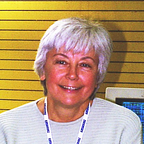Stamps That Tell a Story
Philatelic Finland.
This article first appeared in the March, 2003 issue of Gliding magazine. Temporal references have been retained as originally written. — Ed.
The Finnish Department of Posts issued a postage stamp showing a yellow high performance sailplane over the lake regions in conjunction with the upcoming World Championships.
This sailplane was the PIK-20 prototype. First Day Covers were postmarked both in Finland’s capital Helsinki and in Lahti, the home town of Eiri Avion which produced the PIK. Until the postage rate went up, Eiri Avion used ‘their’ postage stamp on all outgoing company mail.
According to a company flyer, the PIK-20 — the Soaring Finn — surpassed all previous Standard Class sailplanes in performances figures. And many of today’s pilots still agree with this statement.
PIK — what do these letters mean? Polyteknikkojen Ilmailukerho RY, or translated into English: The Aeronautical Association of the Students of the Helsinki University of Technology. The abbreviated name is pronounced as pea-eye-kay, not pick.
Additional Background Information
PIK serial numbers were introduced in 1946 and initially it was thought they would be given to designs used for Masters degree theses at the University of Technology. This changed later with planes being built away from the University community.
The first serial produced ship was the PIK-3, a “small club high performance sailplane,” the thesis work of Lars Normen. Work on the PIK-3 began in 1942 and the prototype was completed in 1950. This conventional wooden structure was redesigned in 1957 and as a PIK-3C, the prototype took second place in the OSTIV Standard Class type competition in 1958, in conjunction with the Internationals held at Lezsno, Poland. It was a robust and reliable 15m sailplane. SIL, the Finnish Aviation Association, started serial production of this type, naming it Kajava.
The label in the montage shows this PIK-3C sailplane. It has a very special place in my own collection because for a long time I had no idea what the sailplane was and which country it came from. When Finland hosted the Internationals Eiri Avion produced several picture postcards and one shows the SIL logo in the lower left hand corner, the same symbol as was shown on my stamp. Now I knew!
In the early 1970s, the design work on a composite Standard Class high performance sailplane was begun at the Laboratory of Light Structures at the University. The new competition regulations permitted trailing edge flaps and waterballast which was incorporated into the thesis work of Pekka Tammi.
A new epoxy was used in the construction that allowed the ship to be painted nearly any colour. From the yellow prototype which had its first flight in October 1973, the PIK-20 evolved as the first notable export success of the Finnish Aircraft industry. Until the end of 1980, a total of 416 PIK-20s of different versions were built, prior to the production rights being sold to the French company Siren.
The second prototype, was flown at the 12th Internationals at Waikerie in January, 1974 by Raino Nurminen. He placed 13th in the competition. The glider mail shown in the montage above, sponsored by the Australian Airmail Society, was carried by Nurminen on the last day of the competition. The task was a triangular flight: Waikerie — Alawoona — Karonda, and he finished in 7th place on that day. According to a search of the internet, Fox November or OH-425 is now in the Finnish Aviation Museum at the Helsinki-Vantaa airport (see Resources, below).
A total of twelve PIK-20s were entered in the 15th Internationals Standard Class at Räyskälä, Finland, in June 1976. The 1st, 2nd, 3rd and 5th place were taken by this design (and its pilots). This all glass-fibre high performance ship, now covered with a white gel coat, showed the world how good it was: Ingo Renner (Australia) flew his own personal ship to first place.
©2003, 2023 Simine Short
References
- PIK–20 Advertising Flyer, published and distributed by Eiri Avion, Finland.
- Raunio, Jukka and Erkki Soinne, Risto Oikarinen (1981) Aircraft Designs with a PIK Serial Number. Extracts of the book were translated into the English language by Jouko Vallikari and distributed by the Aeronautical Association, Helsinki University of Technology.
Resources
- Finnish Aviation Museum — “an exciting visiting destination for the whole family, located in the heart of the Aviapolis area in Vantaa. Our collections include dozens of aircraft related to the history of Finnish aviation…”
- Stamps That Tell a Story: The Series — Catch up on your missing instalments of this excellent, informative series of articles presented previously in the New RCSD and of which this article is the most recent part.
Simine Short is an aviation researcher and historian. She has written more than 150 articles on the history of motorless flight and is published in several countries around the world as well as the United States. She is also the editor of the Bungee Cord, the quarterly publication of the Vintage Sailplane Association. Simine is currently working on a biography of aviation and soaring pioneer Octave Chanute.
Read the next article in this issue, return to the previous article in this issue or go to the table of contents. A PDF version of this article, or the entire issue, is available upon request.
